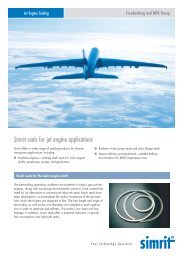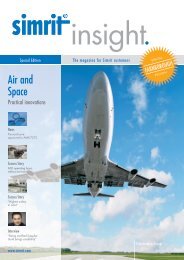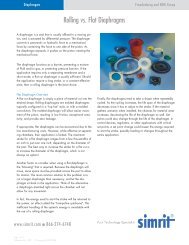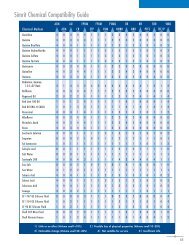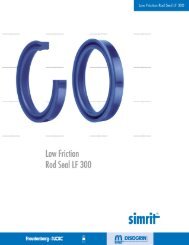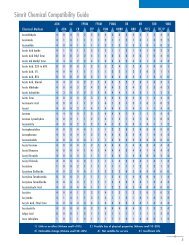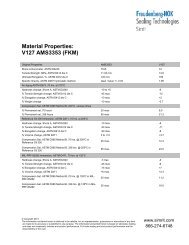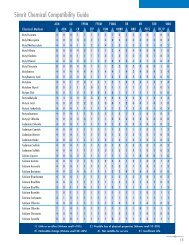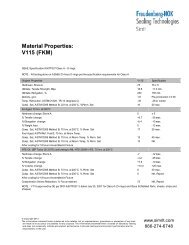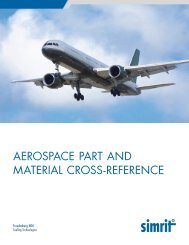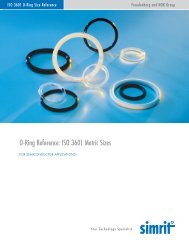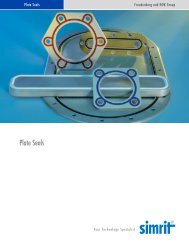Diaphragm Design Manual - Simrit
Diaphragm Design Manual - Simrit
Diaphragm Design Manual - Simrit
Create successful ePaper yourself
Turn your PDF publications into a flip-book with our unique Google optimized e-Paper software.
Figure 10 – The Changing Effective DiameterIn the past, considerable emphasis was placed on using diaphragms to produce a constant effective areathroughout the useful stroke. With the addition of more convolution height and a narrower piston-boregap, 180º convolutions could be accomplished. This approach did not produce the most durablediaphragms. The rolling of the material through tight radii at the top of the convolution increases internalfriction and raises the potential for compression cracks.In the final analysis, the maximum area change that could be realized would be the difference in the areaof the piston and the area of the bore. Tests on diaphragms with less than an 180º convolution, underlight pressure, featured some measurable changes in effective area.Conversely, these same parts showed no measurable changes when higher pressures were introduced aslong as there was some semblance of a curve in the convolution during the stroke.While a changing effective area can have some negative affect on diaphragms required to be functionalat extremely low pressures (inches of water), practical applications have shown that it is often moreadvantageous to utilize diaphragms with lower, wider convolutions and gentle blending radii to reducestresses, than to worry about its potential change in effective area.Devices requiring return springs are one limitation to this approach and this circumstance is furtherdeveloped in the next section.Formula 7 – The <strong>Diaphragm</strong>’s <strong>Design</strong>ed Effective Area Piston Diameter CylinderDiameter Effective Area ( <strong>Design</strong>) 42x © Copyright FNGP 200929



